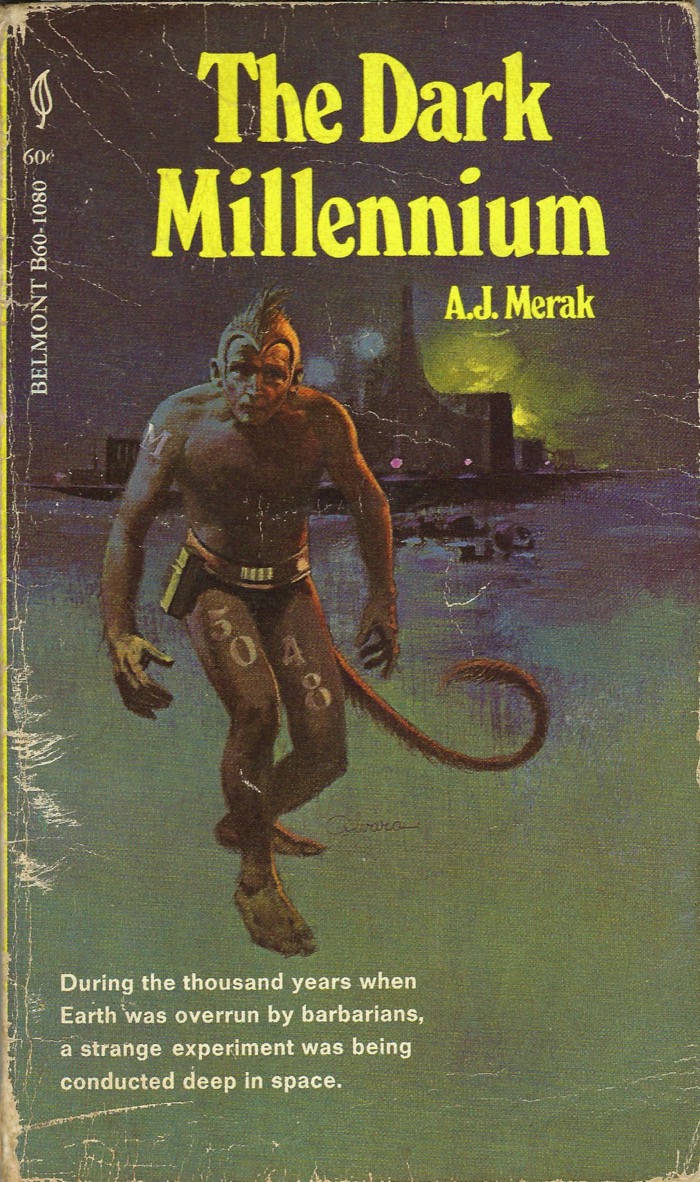The Dark Millennium
Reviewed date: 2025 Sep 6
Rating: 1
143 pages
Poignant and harrowing
The book starts out with a series of poignant and harrowing scenes depicting the outbreak of nuclear armageddon. Ilse Walchern and her friend Carl Seeborg on holiday at resort town of Ustka on the Baltic Sea; pilot Simon Marks having a beer in Brooklyn restaurant; Vladimir Omolov running away into the Ural wilderness because he saw the rocket launch and knows the retaliatory strike is inevitable; Paul Mayhew and Patricia Corday in love on a trip to Italy, looking out at the Mediterranean Sea and the Faraglioni rising out of the dark waters; blind Stephen Norcross bravely emerging from an underground bomb shelter in London to face the end of all humanity. Author A. J. Merka is supremely talented; the scenes are poetic and heartbreaking, they remind us of the best of humanity when the world is experiencing the nuclear war caused by the worst of humanity.
It's a shame the book is so rotten.
Mr. Merak can turn a phrase with the best of them, but the storytelling and the plot of The Dark Millennium is complete trash.
Abducted by Vorzans
All seven of the characters introduced in the vignettes survive the nuclear armageddon. They are the only survivors. An alien race called the Vorzan abduct them and put them into suspected animation. The Vorzan wish to colonize Earth, but to do so they must be sure that the effects of planet-wide nuclear war have dissipated and the planet is safe to live on. To that end, they'll drop a couple of their human test subjects onto the planet every two hundred years or so and see how they fare.
That makes no sense, and Simon Marks even calls them out on it: "Wouldn't it be far simpler to send [instruments] down at regular intervals? Surely you can measure the radiation, the composition of the atmosphere and anything else you might need." But no, for plot reasons the Vorzan must send our heroes down as guinea pigs.
First awakening
Marks and Norcross are sent down first, after 250 years in suspended animation. They land right in a radioactive hot zone: the pulverized remains of a bombed city. After a day of walking they get to safer land, but it's too late. They've both received lethal doses of gamma radiation and die in horrific pain.
Second awakening
At the 700-year mark the Vorzans send down Ilse Walchern, Carl Seeborg, and Vladimir Omolov. They don't perish from radiation poisoning. Instead, they find a city built by mutants, which presumably are the descendants of humanity who survived the nuclear war. Never mind that we were reliably informed earlier in the book that these seven people rescued by the Vorzans were the only humans left alive. Now there is an entire civilization of mutants. (Mutants who, after 700 years, still speak recognizable English, but never mind.) They never meet the mutants, mind you: the mutants attack them, there's a shootout with laser guns, and Walchern, Seeborg, and Omolov die in horrific pain as energy weapons "[lick] through [their] lungs like an inferno wind."
Third awakening
After nearly a thousand years, the Vorzans revive Paul Mayhew and Patricia Corday. This time the Vorzans give them a pinnace and allow them to fly it around and explore the whole planet. Mayhew figures if any humans are still alive, it would be in Antarctica because it's the only continent that wouldn't be bombed into radioactive oblivion. That makes no sense at all. Nobody can live in Antarctica because it's a frozen desert.
But what do you know, he's right! Paul and Patricia find a thriving city of regular non-mutant humans living under the ice in Antarctica. Paul warns them about the Vorzan fleet that's in orbit, poised to begin colonization, and explains how to defeat them. They gather up a few nuclear warheads and fly to a remote island in the Pacific to turn those warheads into weapons capable of defeating the Vorzans.
Fortuitously, on this Pacific island they find a huge tower constructed centuries ago by mutants. There are no mutants anymore, though. It appears mutants have died out. Conveniently. Also conveniently, the mutant tower is filled with "row upon row of sleek-bodied missiles." Very nice. They rig the missiles up with their nuclear warheads and launch them into orbit, where the missiles destroy all the Vorzan spaceships.
All but one, that is. The Vorzan flagship. The big one. The invincible one. The one that can detect and avoid any nuclear-tipped missiles that are on the prowl for it. But—ooops!—it can't detect non-nuclear threats. An old satellite, Explorer VII, launched back in 1969 and swinging around in Earth orbit ever since, coincidentally and conveniently smacks into the Vorzan flagship and blows it all to pieces.
The end
I hate this book so much.
